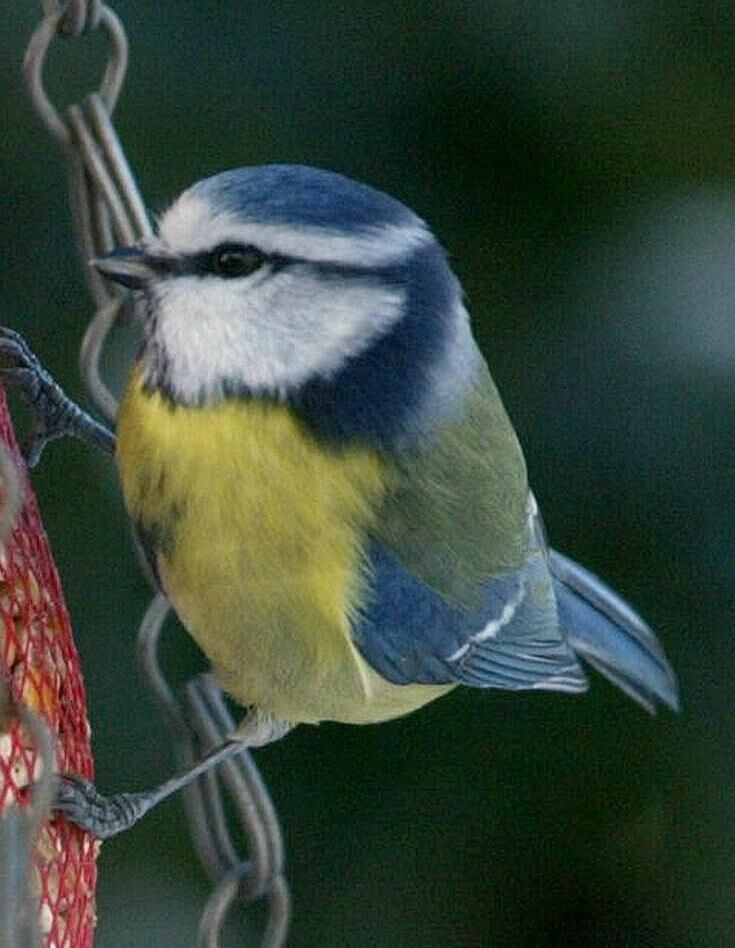Richard Collins: Singing skills may be a sign of a 'good catch'

Male blue tit song is simultaneously selected for consistent repetition as well as for song diversity according to a new study
Love: roaring flames for a year, ashes for thirty — Giuseppe de Lampedusa in
Birds are not just singers, they are also composers. A cock robin produces not one, but multiple songs. So does a blackbird. Individuals of most species have more than one musical score in their repertoire. Even the yellowhammer, uttering only a half dozen staccato notes, with a slight drop in pitch, can vary his performances. Developing a song requires energy and practice. Why then do birds seem to waste valuable resources creating what seem to be superfluous ones?
Beau Geste and his brothers in the French Foreign Legion propped up the bodies of as many dead men as they could find — to fool their enemy into thinking that they were a large force. According to what John Krebs termed the ‘Beau Geste Hypothesis’, a bird sings different versions of his song to give challengers the impression that many rival males are present and that they should seek a territory elsewhere. But could alternative songs have other, less-obvious, functions?
To pass his genes on to the next generation, a male must master the art of seduction. A good territory and pristine plumage are prerequisites for success. Courtship feeding, as businessmen know, is a valuable inducement in contractual situations but producing a quality song is crucial to winning her favour. What exactly is it about his recital that impresses her, and what role, if any, does having a second song play in the mating game?
Sexual selection for both diversity and repetition in birdsong. New paper, open access. #ornithology#birdsong #bluetithttps://t.co/kODNbCIGPb
— Ian Hartley (@IanRHartley) June 16, 2023
Scientists from Lancaster University recorded and analysed more than 7,000 songs of wild blue tits breeding in nest boxes. They then played recordings of songs to receptive females. What turned the hens on, the experiment showed, was not just the music itself, but the ability of a singer to repeat his recital accurately. Being able to create a faithful copy of a song requires elaborate muscular control and is an indicator of general fitness. A male with the ability to do so effectively is likely to be ‘a good catch’. The clutches of females, whose partners produced the most accurate reproductions of their songs, tended to be larger than average, the researchers found.
But, the study also showed that variety is the spice of life for blue tits. Females living in connubial bliss became bored eventually and progressively less responsive to their mate’s song. To keep his partner stimulated, and avoid being cuckolded, a male blue tit changes his tune from time to time. By singing a different sexy song, he re-awakens her passion. ‘Oh Romeo Romeo, wherefore art thou Romeo’? The pair renew their marital vows and embark on a second honeymoon.

But there is a paradox here: female blue tits seem drawn both to consistency and to its opposite; novelty. These findings, the researchers say, suggest that ‘an evolutionary mechanism’ drives ‘song diversity in birds’.
"Our study shows that male blue tit song is simultaneously selected for consistent repetition as well as for song diversity".
"An optimal balance between repetition and diversity may explain the singing style of many bird species and displays of other animals," they conclude.








